Various types of labelling requirements apply to essentially all products manufactured or imported for sales in the European Union. These are normally part of regulations and directives, such as the Low Voltage Directive or General Product Safety Regulation.
EU labelling requirements cover compliance symbols, such as the CE mark and WEEE mark, traceability, and more.
Failing to correctly label the product and packaging can result in fines or a recall – which is why it’s so important to understand the requirements that cover your products.
Note that this guide doesn’t cover packaging recycling symbols, which can be found here.
Content Overview

FREE CONSULTATION CALL (US, EU & UK)
- Request a free 30-minute call with Ivan Malloci to learn how we can help you with:
- Find product requirements
- Certification and labeling
- Lab testing
CE Marking
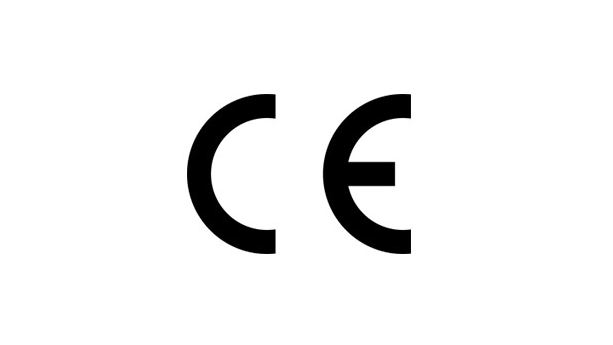
The CE marking indicates that the product is compliant with relevant CE directives and regulations, such as the RoHS Directive, PPE Regulation, Toy Safety Directive, and the Low Voltage Directive.
The CE marking is mandatory for products falling within the scope of one such directive and regulations. Further, the CE marking should not be affixed to a product that is not covered by a CE directive or regulation.
Several directives and regulations, such as the PPE Regulation, require importers and manufacturers to affix additional information with the CE mark:
- Notified body identification number
- A pictogram (e.g. indicative of the risk the PPE is meant to protect against)
Product examples
- Electronics
- Chargers
- Toys
- Sunglasses (PPE)
- Helmets (PPE)
- Medical devices
- Machinery
- E-bikes
- Electric scooters
- Batteries
- Construction products
Additional Information
In addition to the CE marking, most directives and regulations also require importers and manufacturers to include additional information on their product labels. This may include traceability information such as manufacturer or importer identity, or user instructions.
Keep in mind that the exact information needed varies depending on the directive or regulation.
Examples
- Importer/Manufacturer name
- Contact details
- Batch ID
- Model number
- Input/Output voltage
- Safety instructions
Products: Products covered by one or more CE directives or regulations
Radio Equipment and Charging Devices Labelling
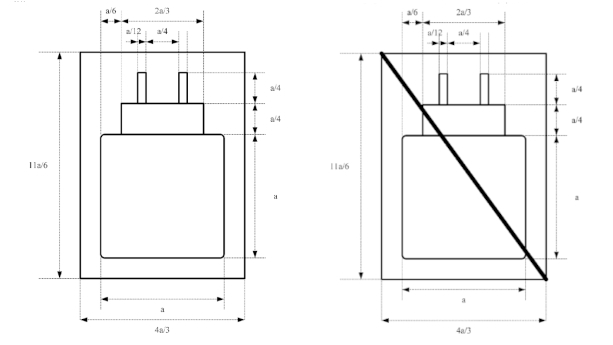
The Radio Equipment Directive sets labelling requirements for radio equipment and charging devices with a USB Type-C receptacle.
If the radio equipment:
a. Includes a charging device, it must include the pictogram found under Annex Ia, Part III 1.1.
b. Does not include a charging device, it must include the pictogram found under Annex Ia, Part III 1.2.
In the case that the radio equipment does include a charging device, the label on the charging device must include the following information:
a. XX — YY: “XX” and “YY” representing the minimum and maximum required power, respectively.
b. W: Representing the power, in watts.
c. USB PD: Include this abbreviation for “USB Power Delivery” if the radio equipment can efficiently deliver the current from the charging device to the radio equipment without compromising the battery life.
Product examples
- Mobile phones
- Laptops
- Headsets
- Portable speakers
- Keywboards
- Digital photocameras
Products: Radio equipment
WEEE Symbol
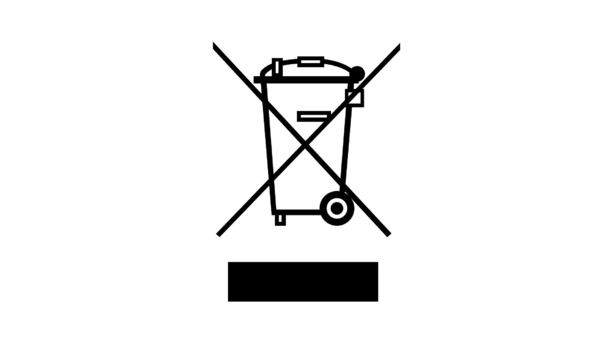
The WEEE symbol indicates a separate collection of waste electronics, and it is mandatory for most electronics imported and sold within the European Union.
Producers must affix the WEEE symbol onto the electronic and electrical equipment. When the product prevents placement of the symbol, they should affix it to the packaging, the usage instructions, and the product’s warranty.
Product examples
- Refrigerators
- Printers
- Laptop computers
- Video cameras
- Bluetooth speakers
- LED lights
- Electronic toys
Products: Electronics
Battery Labelling
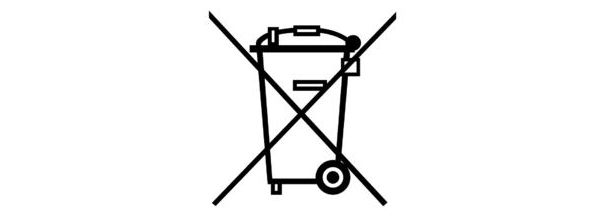
The labelling requirements for the Batteries Regulation include CE marking requirements, which we covered earlier in this article. In this section, we list and explain additional requirements.
Separate Collection Symbol
Batteries must carry the Separate Collection Symbol, as shown in Annex VI Part B. The symbol must:
a. Cover at least 3% of the battery’s largest side.
b. Cover at least 1.5% of the surface area of cylindrical battery cells.
c. Have a maximum size of 5 x 5 cm.
d. Be 1 x 1 cm and be printed on the packaging if the battery’s small size prevents placement of the symbol.
Other requirements
According to the Battery Regulation, battery labels must also contain the following information:
a. Manufacturer’s identification information (name, registered trademark, address, and website and email address (if available)).
b. The battery’s category and identifying information (model identification, batch/serial/product number).
c. The geographical location of the battery manufacturing plant.
d. Manufacture date (month and year).
e. The battery’s weight.
f. The battery’s capacity.
g. The battery’s chemistry.
h. The battery’s hazardous chemicals.
i. The usable extinguishing agent.
j. The battery’s crucial raw materials, in a concentration exceeding 0.1% weight by weight.
Batteries, or their packaging and accompanying documents, should also bear a visible and permanent QR code that provides access to the battery’s product passport.
Product examples
- Portable batteries
- Starting, lighting, and ignition (SLI) batteries
- Light means of transport (LMT) batteries
- Electric vehicle batteries
- Industrial batteries
- Batteries incorporated into products
Products: Batteries
EU Textiles Labelling
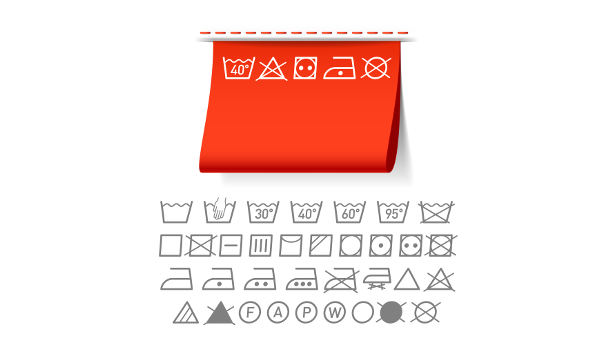
Clothing and other products containing a minimum of 80% by weight of textile fibres must be labelled with the correct fibre composition (e.g. 100% Cotton or 100% Polyester).
Further, the label must be permanent, which means it must either be attached or printed to the item. A sticker is therefore not enough. The textile composition information on the label must be clearly separate from other information such as product care.
Product examples
- T-shirts
- Underwear
- Children’s clothing
Products: Textiles
Toy Warning Labelling
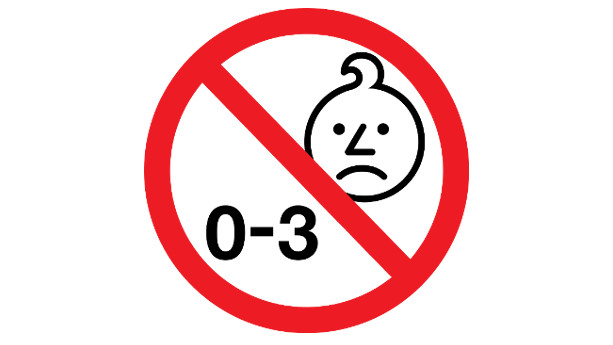
Importers and manufacturers of toys must ensure that the product and the packaging carry the correct warnings on the labels. Different toy categories necessitate specific warning statements. Though we list a few below, you can find the rest in Annex V Part B:
1. Toys considered dangerous for children under 3 years — “Not suitable for children under 36 months”, or “Not suitable for children under three years”, or the age warning symbol.
2. Functional toys — “To be used under the direct supervision of an adult”.
3. Skates, skateboards, scooters, toy bikes — “Protective equipment should be worn. Not to be used in traffic”.
4. Toys in food — “Toy inside. Adult supervision recommended”.
5.Toys meant to be strung by cords across cradles — “To prevent possible injury by entanglement, remove this toy when the child starts trying to get up on its hands and knees in a crawling position”.
Manufacturers must ensure that their toy products or their packaging:
- Do not carry warnings that conflict with the toy’s intended use
- Carry obvious, readable, and precise warnings
- Have warnings that are preceded by the word “Warning” or “Warnings”
- Include age warnings
- Feature warnings in the language of the relevant EU member state
Product examples
- Toy marbles
- Construction toys
- Building block toys
- Toy science kits
- Toy bicycles, scooters, skates, skateboards
- Rubber duck toy
- Toys in chocolate eggs
- Toy imitations of protective helmets and masks
Products: Toys
Food Contact Materials Symbol
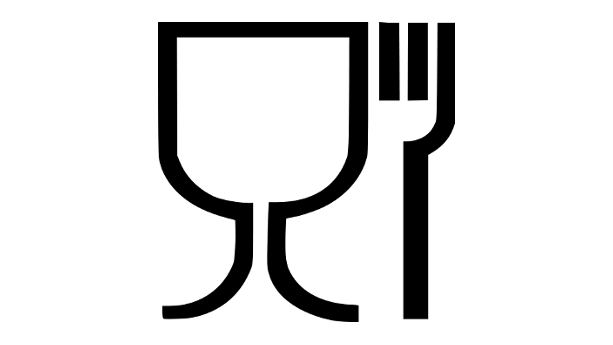
Certain types of food contact materials that do not yet contact food when sold, such as kitchen appliances and tools, must carry the glass and fork symbol represented above and in Annex II. However, products clearly intended for food contact, such as cutlery or drinking glasses, do not necessitate the provision of that symbol.
Label Information (EU FCM Framework Regulation)
Food contact materials must display the following on their labels (affixed to the product or the packaging):
a. The words “for food contact”, or a specific usage indicator (e.g., soup spoon), or the glass and fork symbol.
b. Special instructions for proper and safe use, if necessary.
c. The manufacturer’s, processor’s, or seller’s name (or trade name) and address (or registered office).
d. Traceability identification information.
e. Permitted-use information (for active materials)
f. Name and quantity of substances released by the active component
Label Information (Specific measures)
Some measures that are only relevant for specific food contact materials contain additional labelling information. We list a few of those measures and briefly explain their labelling requirements below.
Active and Intelligent FCM Regulation (EC) No 450/2009
In addition to complying with the labelling requirements provided above, active and intelligent materials and products must comply with additional rules, such as:
- Including the words “DO NOT EAT”, and
- Including the ‘do not eat’ symbol in Annex I
Regenerated Cellulose Film FCM Directive 2007/42/EC
The material or product made of regenerated cellulose film must bear special usage conditions on its label.
Product examples
- Blenders
- Plastic plates
- Wooden chopping boards
- Pots
- Tinfoil
Products: Food contact materials
Single-Use Plastics Marking

Some types of plastic products, intended to be used only once and then discarded, are mandated to comply with the requirements provided by the Single Use Plastic (SUP) Directive. These requirements include a harmonised marking.
Marking requirements
The harmonised markings may be placed on the packaging or the product. Either way, the markings might specify the following:
a. Suitable options for managing the waste product (or what to avoid doing when disposing of said product).
b. How the presence of single-use plastic waste products may negatively impact the environment by way of littering.
You can download the different markings from this page, and find product-specific harmonised marking rules in Annex I-IV of Implementing Regulation (EU) 2020/2151.
Product examples
- Cutlery, plates, straws, and stirrers
- Food containers
- Cups for beverages
- Beverage containers
- Plastic bags
- Packets and wrappers
- Wet wipes and sanitary items
Products: Single-use plastic products
Energy Label
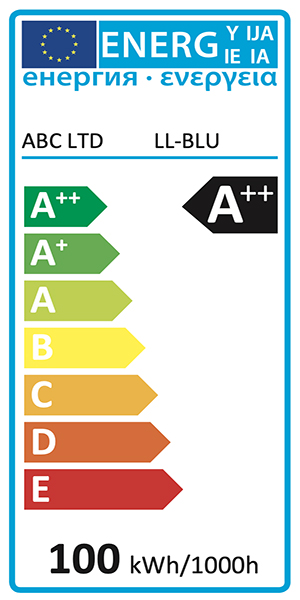
The Energy Labelling Framework Regulation applies to electronics, such as lighting products, kitchen appliances, electronic displays, computers, washing machines, and air conditioners. The Energy Label specifies device classification and energy consumption, thereby incentivising manufacturers to produce energy-efficient products.
You can use the European Product Registry for Energy Labelling (EPREL) database to register your product and then generate an energy label based on that product.
Product examples
- Lighting products
- Kitchen appliances
- Displays and TVs
- Computers and servers
- Washing machines and dryers
- Air conditioners and fans
Products: Electronics
Cosmetics Labelling
The Cosmetic Products Regulation requires that cosmetic products – both manufactured in the EU and imported from overseas – bear labels that inform the reader about the supplier and the product.
Label information
Per the regulation, cosmetic products are required to bear information such as the following on their packaging before being placed on the market:
a. The importer’s or manufacturer’s registered name and address.
b. Nominal content of the packaging by weight or volume.
c. Expiration, or ‘best used before the end of’, date.
d. Precautionary information.
e. Reference or batch number of manufacturer.
f. The product’s function.
g. List of ingredients, including nanomaterials.
Note that warnings may also be required, according to the substances that are used in the product.
Product examples
- Soap
- Deodorant
- Shampoo
- Toothpaste
- Makeup
- Perfume
Products: Cosmetic products
General Product Safety Regulation Labelling
The General Product Safety Regulation mandates manufacturers to label their products and packaging regarding warnings and traceability information.
Traceability Information
Manufacturers must ensure they provide on their products (or packaging or accompanying document) the following traceability information:
- Product identification (type, batch, serial number)
- Manufacturer’s name
- Manufacturer’s registered trade name or trade mark
- Contact details (postal and email addresses)
Additional information
To determine how safe a product is, it should include labelling such as that regarding:
- Age suitability for children
- Instructions and warnings for safe use and disposal
Product Examples
Products: General consumer products
Biocidal Labelling
The Biocidal Product Regulation requires importers and manufacturers to ensure that biocidal products and treated articles, that is an article that contains a biocidal product or for which a biocidal claim is made, are properly labelled (e.g. hazard and precautionary statements).
Labelling information (Treated articles)
The responsible person placing a treated article on the market must ensure that the label includes:
a. A statement regarding the article’s biocidal properties.
b. Information regarding active substances within, as well as the potential of human contact or release into the environment.
You can find more information about the labelling of treated articles in Article 58.
Labelling information (Biocidal products)
Authorisation holders must make sure biocidal products bear labels that comply with the sanctioned summary of the characteristics of the biocidal product.
Other than hazard and precautionary statements, the label should contain the information listed in Article 69(2).
Product Examples
- Textiles
- Washing liquids
- Veterinary disinfecting soaps
- Wood preservatives
- Slimicides
- Rodenticides
- Embalming fluids
Products: Articles treated with biocidal products, biocidal products
Classification, Labelling and Packaging (CLP) Labelling
The Classification, Labelling and Packaging (CLP) Regulation aims to ensure that health and the environment receive a high level of protection. It also aims to make sure that the unrestricted transportation of articles, mixtures, and chemical substances can take place.
Specifically, the CLP Regulation sets labelling requirements for dangerous substances and articles that contain such substances.
Labelling information
The CLP Regulation requires hazardous mixtures, substances, and articles that contain these substances, to carry a label that provides information such as the following:
a. The supplier’s name and contact details.
b. A number signifying the amount of mixture or substance in the package.
c. Product identification details.
d. Hazard pictograms, where appropriate.
e. Signal words, where appropriate.
f. Hazard statements, where appropriate.
g. Relevant precautionary statements, where appropriate.
h. Supplementary information, where appropriate.
Pictograms
The CLP Regulation requires the provision of hazard pictograms on the label to communicate the exact hazards that the relevant substance presents.
The Classification and Labelling (C&L) Inventory lists many substances that have their specific hazard pictograms. We list several examples below and briefly state their meaning.
- N,N-diethyl-m-anisidine – exclamation mark symbol – health hazard
- α,α,α-trifluoro-p-toluoyl chloride – corrision symbol – corrosive
- Cyclobutanemethanol – flame symbol – flammable
- Isomethadone Nitrile – skull and crossbones symbol – acute toxicity
- Zinc oxide – environment symbol – hazardous to the environment
- Dialuminium cobalt tetraoxide – health hazard symbol – serious health hazard
- Lead(2+) 2,4-dinitroresorcinolate – exploding bomb symbol – explosive
Product examples
- Scented candles
- Detergents
- Glue
- Drain cleaners
Products: Articles containing hazardous substances
Ecolabel
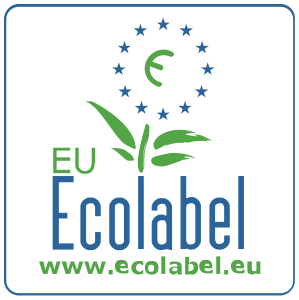
The EU Ecolabel communicates that a certain product is made using sustainable processes, and materials. That said, unlike most other compliance marks in this article, the EU Ecolabel is voluntary.
Requirements
Using the EU Ecolabel requires approval. In other words, you cannot use the label based on self-certification. The specific criteria you must fulfil depend on the product. Below follow the criteria for Textiles and Furniture, as an example.
Textiles
a. The product shall not contain lead-based pigments.
b. Manufacturers shall perform colourfastness, washing, wet rubbing, and dry rubbing tests on dyed yarn, final fabrics, or final products.
c. Manufactured elastane shall not contain organotin compounds.
Furniture
a. Manufacturers shall not use restricted hazardous substances and mixtures such as lead and cadmium
b. Manufacturers shall use PVC-free plastic
c. Manufacturers shall provide a minimum of 5 years of guarantee at no additional cost. Also, they shall make spare parts available to customers.
Product examples
- Textiles
- Footwear
- Furniture
- Cosmetics
- Flooring
- Paper Products
- Electronic Displays
Products: Clothing, Furniture, and more
Footwear Labels
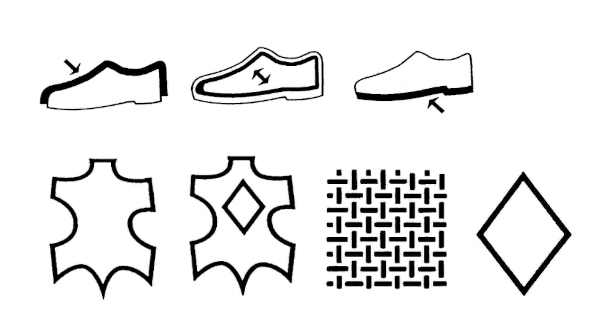
Directive 94/11/EC sets labelling requirements for the materials used in the main components of consumer footwear.
You must correctly label the upper material, outer sole, and inside lining of the shoe, per Annex I. You can use written instructions to specify the materials or use a graphical representation of the shoe.
Additionally, you should ensure the information is obvious, permanent, and visible. If necessary, you may provide supplementary information to accompany the required information.
Product examples
- Outdoor high-heeled shoes
- Ankle boots
- Tennis shoes
- Cycling shoes
- Dancing slippers
- Heel-less overshoes
- Orthopaedic footwear
Material examples
- Leather
- Synthetic leather
- Coated leather
- Textile fibre
Products: Footwear
Amazon EU Product Labelling Requirements
While Amazon doesn’t set its labelling requirements, they do require that all products sold on its platform are compliant with labelling and other compliance requirements in each respective country.
If you’re selling on Amazon.de, Amazon.co.uk, or Amazon.fr, you need to ensure that your product is labelled according to European Union product labelling requirements.
For example, products that fall within RoHS or the Low Voltage Directive must, therefore, be CE marked. Further, products should not carry labels that don’t apply. Amazon is strict about compliance and far more likely to take action against incorrectly or otherwise non-compliant products than the customs or other market surveillance authorities.
Amazon Label Check Example
Amazon may require product and packaging images as evidence supporting that your product is correctly labelled. Here is an example of such a request sent by the Amazon compliance team:
Hello from Amazon Selling Partner Support,
Thank you for your interest in selling [PRODUCT]. We have reviewed the information you provided and determined that it does not meet our requirements. To allow us to continue processing your application, please address the following issues:
Product Packaging Picture:
– The images provided do not meet the EU labelling guidelines, which state that address on the label must be that of an EU country. Please provide product images that meet this requirement.
– The images provided do not meet the labelling requirements, which state that any information added to the product packaging must be securely adhered and not easily removable. Please provide images that meet this requirement.
– The images provided do not meet the labelling requirements, which state that the label must contain a certification mark. Please provide images showing all sides of the product packaging including appropriate certification mark.
Please respond to this case and provide updated document(s) that remedy the issue(s) indicated above. You can respond to this case within the next 14 days or create a new application at a later time.
FAQ
Can a product be covered by more than one labelling requirement?
Commonly, products are covered by more than one labelling requirement in Europe. Electronics, for example, must often carry the CE mark and the WEEE mark, in addition to the directive’s specific labels.
Importers and manufacturers must consider all applicable labelling requirements, rather than looking for labelling requirements that may apply specifically to that product.
In addition, labelling requirements also extend to the packaging and even user manuals.
Do I need a country of origin label when selling in the EU?
No, country of origin labelling is generally not required in the European Union. That said, many products sold in the European Union still carry a country of origin label (e.g. Made in China) as this is a requirement in many other countries, including the United States.
If you’re selling, or at least planning to sell, in the United States, you may as well get your product labelled according to US labelling requirements – in addition to those in the EU.
Further, although the country of origin is not required, you are not allowed to mislead consumers by claiming that the product is manufactured in another country than it actually is.
How do I know if my supplier labels the product correctly?
Manufacturers, at least outside the EU, are not compliance experts. They don’t keep track of labelling requirements in other countries and simply rely on their buyers to provide accurate label files.
As such, you must create compliant label files and submit these to your supplier before entering production.
How do I create the label file?
You can use Adobe Illustrator, Photoshop, or any other software. What matters is that you create a label file that is an accurate representation of the label you want to be printed on the product, packaging. and user manual, if required.
Recommended file formats
- .ai
- .eps
- .png
Additional information
- Dimensions
- Colour
- Print type
- Print position
How do I make sure my factory gets the label right?
We strongly recommend that you include a label check in your standard quality control checklist. Assuming you’re importing products from overseas, it’s only a matter of providing photocopies and design drawings showing the labels, dimensions, and where (e.g. product, packaging, and manual) the labels should be present.
The quality inspection agent can take photos of the labels, helping you decide whether the products are correctly labelled or not.
What should I do if my product is incorrectly labelled?
You need to instruct your supplier to relabel the product, assuming the items are still in their production facility. If not, you must either return or relabel the products.
However, it’s often impossible, or expensive, to relabel an incorrectly labelled product – so you better make sure that you provide label files and detailed documentation to your supplier to prevent such situations from occurring in the first place.
Can I label the product once it’s imported into Europe?
In general, a product must be correctly labelled ‘once it’s placed on the market’. This can be interpreted in different ways, which is why we recommend that you ensure that your product is correctly labelled before the product is imported into the EU.
It’s also more expensive to label products once inside the EU, compared to instructing your manufacturer to do it for you.
There are also cases in which the customs authorities have seized imported products for not being correctly labelled.
All in all, there’s no benefit in labelling the products once in Europe, assuming you are not manufacturing inside the EU.
Are barcodes required when selling in the EU?
Barcodes are not mandatory but strongly recommended if you intend to sell to retailers or online marketplaces.
Some of the companies that use and require GS1 barcodes include Amazon, Tesco, Sainsbury’s, John Lewis, WHSmith, Unilever, Ocado, Nestle, Google, Fruugo, La Redoute, New Egg, NHS, Walmart, and Macy’s.

















We ship items from the US to the EU. We are being informed that we need to provide the following 3 labels now on all of our products
Lot # needs to be added to all products
EU responsible party sticker
Item Barcode
We sell adult novelty items. Since we have inventory currently that does not have any of these labels, which ones do we really need to add on?
Also what if we just indicate the following in the commercial invoice instead to ensure clearance with customs.
Hey there!
Do you know if there are additional/separate requirements for labeling sleeping bags and tents? I know that the US requires law labels, for example. I also know that there’s an ISO standard (23537) for sleeping bags, but does the EU adopt this standard into any of their regulations regarding labeling for sleeping bags? Any info you have would be greatly appreciated. Thank you!
I sell bicycle battery fireproof bag in Germany. Does this require CE Mark?
Dos this labeling requirements also applicable for B2B? For Example, For hotels, if the slippers are provided in the hotel room for free, does the labelling requirements has to be also fulfilled the same way when the product is sold to direct consumer?
Hi, Frederick , thanks for all your advices.
I have a question about :
* Activity Book, coloring books, reading books need EN71 Standard test report for Peru ?
I appreciate your comments.
Best regards.
Sarahjane
Hello Sarahjane,
I have no experience with compliance requirements in Peru. However, Peru is not part of the EU so it’s up to them if they accept EN 71 compliance or not.
Hi There,
Please can you advise if you are able to help with CE labelling for the below products.
We have 2 requirements here – one for children’s toys below requiring a CE label, these have conformity reports and test certificates,
AN00029 Rubber Llama
AN00047 Wooden Puzzle
AN00065 Stuffed Pillow
AN00071 Stuffed Paint Animal
Then we have the following – NOT children’s toys, but we need labels in order to sell them. The label must show origin of products and type of textile. This is all we need.
PM010 ASSORTED BLANKET
PV005 ASSORTED KIERCHIF MIX
PM014 AREA RUG WOOL AND LEATHER
Hi Holly,
I suggest you book a call so we can discuss this further:
https://www.compliancegate.com/call/
Hello Fredrick,
Can we claim on our herbal products that they have health benefits such as sliming, relaxing, Liver care and etc. in EU?
There are many companies doing that in Europe and UK currently.
Thank you in advance!
Hi Sawhn,
Herbal products is not our area of expertise unfortunately
It is necessary to put a warning on a scissors product in the EU, for safe use against sharp edges even if I have completed a risk assessment which is low risk?
What about in a country like Romania- do they follow EU for this requirement?
thanks,
SB
Some specific labellnig quesitons:
In order to put a product on the market in the EU, does the importer/manufacturer NEED to have an EU address on the box/documentation? And if this is a UK company, will a UK address suffice, or will they need to have a different EU address as well?
And for the UK, does this need to be a UK address, or can an EU address be okay for sale in the UK?
Do you know of a good CE label software?
Hello Amy,
We have a list here: https://www.compliancegate.com/product-compliance-software/
HI Fredrik
I popped into your page searching for EU label requirement. I just started new job and my UK manufacturer does not have EU entities address on any of our products which are chemical moistures labels. In my previous job we have added that right after the brexit – but i forgot if the address is needed on both – product label and or outer packaging. Most of our products come in pre-printed cartridges or tubes, which then are boxes of 10 or so.
How can we quickly bring our existing stock to compliance – as its gonna be a lot of products that will need some form of overlay before we can created new format and order new complaint with EU CLP labels
I would really appreciate your inside
Hi Frederic,
Thank you for the information. Quick question, how about the compliance requirements for decorations such as metal signs, tags, and similar items. Are there any requirements in the EU?
I believe such products require a country of origin in the USA. What will be the minimum compulsory labeling requirements in the EU?
Thank you,
Hi Fredrik,
We manufacture/licence many products (eg cutlery, knives, dinnerware) for sale in the EU & beyond.
We include a product name/description, the country of origin, the materials it is made from, dimensions/capacities, importer details, plus some use/care icons, barcodes, FSC & recycling logos etc etc etc. Some of the information is also translated in up to 17 different languages. obviously this is a huge amount of information to include on printed product packaging and we are looking at including a QR code linking to a product website for a lot of the information. Is there anything that MUST be shown from a legal/regulatory standpoint?
Is there any obligation to indicate legal guarantee terms on package?
Or enough in user manual and/or guarantee list?
Hi Fredrik,
Recently, I have established a company in Belgium, which will lease premises in Belgium and operate a distribution centre. This entity will be established in the EU and its name and contact details will be labelled on our products for traceability purposes. Our products are shipped to the distribution centre and are labelled in accordance with all relevant EU and Member State requirements. However, it is possible that, in addition to EU labelling, the products may also have labels addressing regulatory requirements in other jurisdictions outside of the EU. For example, Californian Prop. 65 labelling.
Would this additional labelling be likely to be viewed as problematic? I’m not aware of any situations where parallel labelling of this kind has led to products begin seized or stopped on entry or any other difficulties with the relevant authorities, but please let me know if you are aware of these kind of situations.
Many thanks,
Nick
Hi Nick,
The only cases I know of in which “additional labels” have been a problem is when products that are not supposed to be CE marked are CE marked… we see “Made in China” and other country origin labels on products in the EU all the time despite this being a US requirement.
hello how is every one
i like to know what labeling on Moisture absorber bas and refill bas is required, and wich test report or certification would amazon ask to check, the content in the bag are Calcium Chloride.
thank you very much
Hussein
Hi Fredrik,
I would like to know what information should we need to put on a hand-held luggage scale when selling in EU? also what product/test certificates do we need for selling silicon earplug in EU? Thanks.
Hello,
I am having a white label agreement with a Chinese manufacturer for some measurement tools. In the EU regulation is stated that we as distributors under our own brand, should have all needed Tehnical docuemtnation. At the moment we are having test reports and CE certificate. What else should we request from manufacturer? I saw something about DoC tehnical documentation… what is that, what does it contain?
Also in the test report is tested only one product from the range with generic name at the biginning, is that correct?
Thank you!
Hi Andrei,
1. I suggest you read these guides:
https://www.compliancegate.com/technical-file/
2. Also, does that “CE certificate” state “Certificate of Conformity” or something along those lines?
3. I would need to look at the test report before I can comment
Hi im looking for advice/answer, I’m starting up my business in merchandising and found some tote bags in China that I would like to buy personalise and sell to my customers but the bags have no care label inside. Just wanting to know if I can sell these still or can I have the labels for them printed in the UK and attached inside the bags myself as I know country they were made and the fabric they are made of?
Hi Jodie,
You will probably need to ask the customs
Is importer name and address needed on the outer case? or just the importer name is fine?
Please help me here
Can you please let me know does the below Pictogram is needed on the PKG+ manual of the below products?
file:///C:/Users/Madhu.Chand/Downloads/Clarifications%20on%20Article%2010%20(10)%20RED%20(2).pdf
1) Wireless charger( inductive charging)
2) Bluetooth earbuds
3) Smart speaker with WIFI, Bluetooth, and Inductive charging function?
We don’t do product assessments in the comment section. You need to contact a lab or a consultant.
Is a manufacturing date required on consumer products label or their packages?
Hi Oleg,
Traceability is often required which generally includes some sort of information about the manufacturing date in order to identify the production run or batch the product belongs to.
Thanks for reply.
Are there any legislative acts with strict requirements – where date of manufacture should be inidicated and format of date (for example on separately package as MM.YYYY, or date of manufacture included in serial number)?
Yes, I suggest you read this guide:
https://www.compliancegate.com/product-traceability-requirements-european-union/
Dear Fredrik. Thank you.
hi , we sell video game worldwide , we located in asia country and ship from non-eu country as well~
let’s take nintendo as an example , all the EU game cartridge and the game case package at the back have the manufactuer info and importer address in EU , so i believe we don’t need AR address for this since they offically have all these info on the package.
Nintendo is a worldwide bussiness, non-EU title game i found out that there’re no EU importer infomation at the back of the game case, however all the game cartridge itself they do bear the CE mark there and i know they have all those test passed and etc since they’re well-known worldwide brand ~~
so in this case do we still need AR ? or we need to print nintendo EU headquarter address and stick it on the package? thank you
Hi Karl,
Not sure if this situation is addressed. Unfortunately I don’t have the answer.
Hello Fredrik, Do these new guidelines apply to individuals in the EU importing goods for personal use purchased through US site on eBay? I.E. Individual new in box toys, or out of package used toys. Thank you for your time.
Hi Lisa,
Which new guidelines are you referring to? The authorised representative address requirements?
If so, then yes. The AR requirements are specifically for businesses outside the EU selling directly to consumers in the EU.
Hi. Hoping you can help me. We sell products worldwide and need to ask a question on Country of Origin markings. Our part of this journey is importing into Europe.
We produce kits containing Far East product, which are assembled in USA.
No Country of Origin label on outside (shipper box) just assembled in USA and the new product number, as making the kit creates a whole new item.
Product inside box could be marked with coo China etc .
Do we need to include CoO on shipper/product box? For Customs, Compliance or the Toy Directive? Thanks Claire
Hello,
My company is importing pressure equipment from 3rd country to the EU, they are covered by PED Directive. We want to indicate our name as an importer on the equipment. According to PED Directive the label or sign should contain the name and address details. Are there any other requirements that such labeling should fulfill (CE mark etc.)?
Hi Bart,
If there are then that is likely written in the directive text, which can be found on the EU website.
For CE products and toys, is DoC required to be inside the packaging box and form part of the manual? If so, what needs to be done when the packaging is very small and no manual accompanies the item, in case of basic AUX or USB cables for example.
The DoC is normally downloadable from the brand’s website, not in the packaging.
I am a translation agency working with a toy manufacturer from the US. They are looking to add the how2recycle logo to their packaging (https://how2recycle.info/labels) Are you familiar with this program? Can you advise how countries like Spain, Italy, France, Portugal and Germany treat this information?
Thank you!
Hi Ina,
No, I am not familiar with this program.
Is `CE’ marking optional for the manufacturer (what I mean is, to put `CE’ mark on the surface of the product) even though a product of the manufacturer has been authorized to put the CE mark on that product? This question might sound a little bit weird but I want to make sure. Maybe, the company might put a wording that their product passed the CE testing somewhere in the product info sheet, which I did not see.
Hello J,
Normally a manufacturer is not authorized by any party to CE mark a product. In most cases, it’s a matter of “self-certification” based on lab test reports, and supported by the DoC and technical file.
Hi
I am an ecommerce company selling silicone plates and bowls on Amazon uk, Amazon has requested this :
Product Packaging Picture:
– The images provided do not meet the labelling requirements, which state that any information added to the product packaging must be securely adhered and not easily removable.
Please provide images that meet this requirement.
– The images provided do not meet the EU labelling guidelines,
which state that the label must contain the business name and address of the manufacturer.
Please provide product images that meet this requirement.
My product is packaged in a transparent poly bag and does not have a packaging box,
and I have non-removable labels on the polybag with the manufacturers address in China.Yet, they declined.
I am only looking to sell in the UK Market.
Are you able to advice please if:
1) Do I need to create product boxes and get the manufacturers address printed on the boxes instead of a polybag, to address the issue of being securely adhered?
2) Can I leave my packaging in the poly bag as it is, and change the sticker to reflect the manufacturers details to be my business address in the UK,
which could be the supposed EU representative, perhaps that what they are looking for, instaed of china manufactuer address?
3) Do I need to include both addresses on a package?
Is the issue with using a label to display manufactures details, or is it that they need the manufactures details in the UK, which could be the business registered address?
I’m just conscious that I could go with the extra cost of getting packaging done, but I don’t want to include the wrong information on the package.
Any advice will be greatly appreciated
Hi Jay,
Please send this text and product images to [email protected]. We can look into this.
Thanks, This is done now!
Hello, Could you share your solution?
I meet the same problem.
I really want what address Amazon need. Is address and business name from China manufactory or UK company business name and office address.
Any help would be very appreciate.
Scenario: The ‘Techy’ company in Japan makes a ‘Widget’ that made for, and shipped to, a UK distribution company ‘UKComp’ with a ‘UKComp’ logo, ‘Made in Japan’ and the ‘Techy’ address on the label. If ‘UKComp’ decide to sell the ‘Widget’ in the UK should the label be changed to say ‘Made in the UK’, and should the ‘UKComp’ address replace the ‘Techy’ address on the label? If ‘UKComp’ then also decide to sell the ‘Widget’ in the EU, through a German based local Economic Operator ‘GComp’, should the label be again changed to say ‘Made in Germany’ and the ‘Techy’ address replaced by the ‘GComp’ address? I assume you can only have one address on the label.
Hi Graham,
There is no country of origin labeling requirement in the EU and UK as far as I know, but it should not be misleading. Claiming that it is made in the UK could be misleading if it is not made in the UK.
Hi,
Thanks for the great article. For selling licensed giftware into the EU, (mugs, vases, wallets, stationery etc.), please can you tell me if it is it mandatory or just preferable for labeling on the packaging to be translated in to multiple languages? We are currently using symbols for safety/care instructions (for example food safe logo, do not microwave etc.) but we particularly want to know if the product description for example ‘ceramic mug’ needs to be translated on the front of the packaging. Products will be imported directly from China to the EU.
Thanks, Angela
Hi Fredrik,
Now that the UK has left the EU, do you know if non-resident importers to the UK also need to have a UK-based address on their product label? We are based in the US and have no interest in setting up a UK branch. We have our US manufacturer’s address on our packaging. Thanks so much!
Hello Emilia,
Seems like it, but or a more limited product scope for the time being.
It’s well explained here: https://www.qservegroup.com/eu/en/qserve-consulting-services/regulatory-affairs/local-representation/ukca—uk-responsible-person
And here: https://www.gov.uk/guidance/regulating-medical-devices-in-the-uk#responsible
Would you happen to know if “Age-labeling” statement, such as “Ages 3-12” is required on toys in the EU?
I am NOT referring to warning labels, rather a statement of age that the toy is safe and appropriate for the child’s age. Age-labeling of toys to guide purchasing decisions for the typically developing child.
“Age-labeling” statement is required in the US.
If you happen to be able to point me to the source, also, that would be very helpful!
Hi Jolanta,
We have a guide on that topic just about to be published. Check back in a week or two.
Hey Fredrik,
I’m in a very difficult and frustrating situation.
My product was also being in my listing was in active due to:
“The images provided do not meet the EU labelling guidelines, which state that address on the label must be that of an EU country. Please provide product images that meet this requirement.”
I have an CE mark on the package however I didn’t have an address.
I then used a sticker label and added UK address. They came back with the same response.
I’m a little confused as I’m selling in UK and my product is in UK, we are now out of the EU. I’ve asked for clarity but I’m getting the same response, which is really frustrating and dishearten. I really need some help! :(
Hi Asha,
In that case, it may be that they only accept an address in the EU. This will also be mandatory for all cross-border sales starting in July this year.
Read this for more details: https://www.compliancegate.com/european-authorised-representative/
Thanks!
This really helped answer some sections. I’ve changed the account to be UK only shipping but I got this message back “
Product Packaging Picture:– We were not able to verify the manufacturer’s information listed on the product packaging pictures provided. Please provide product packaging pictures with valid, verifiable supplier information.”
Not sure how they want me to send the supplier information. Is it a document invoice with their address ?
Thanks!
This really helped answer some sections. I’ve changed the account to be UK only shipping but I got this message back “
Product Packaging Picture:– We were not able to verify the manufacturer’s information listed on the product packaging pictures provided. Please provide product packaging pictures with valid, verifiable supplier information.”
Not sure how they want me to send the supplier information. Is it a document invoice with their address ?
Just to add to this the label has my address.
Hi Asha,
Are they not just referring to your company name?
I have been selling this product since 15th Dec-2020
And there has been no issue untill last week, my listing was in active due to
Product label guidelines.
I have provided all the images which they required but i keep getting the same email reply.
Kindly suggest what should i do
ThankYou
I have the same issue. I’ve started selling since beginning of this month. I’ve sent them 4 emails to them and they keep getting the same email reply too. It’s been nearly 2weeks and a half.
What kind of product is this?
I am having a problem with a personal gift ( belated birthday presents ) not for re-sale for a family member that is currently in Italy. The carrier is asking me to fill in the following , but I have experience with CE regs. Can someone help ?
I declare, on my responsibility, that (please mark with a “x” the correct
choice)
() goods imported with the above indicated awb consist of:
…………………………………………………..
() imported goods are CE marked.
() imported goods do not need to be CE marked as provided by: …………
of …….. (please indicate the related regulation)
() imported goods consist of prototypes which will not be put either for
sale or in service. In case the final use changes, we will comply with
the proceeding provided by the D.Lgs 194/07.
Hi Melissa,
1. Which carrier are you using?
2. Did you buy this from an online seller outside Italy/EU?
Hi Fredrik
We are a U.K. company importing non-food consumer goods into mainland EU. Will I need an EU address on my labelling from Jan 1st 2021 (Brexit) or will my U.K. address be ok?
Thanks
I should also point out that these goods are NOT CE marked. Thanks
Hi Charlie,
My understanding is that this will be a requirement from July 2021.
https://www.conformance.co.uk/9-ce-marking/131-ce-marking-and-authorised-representatives
“However, from July 2021, all manufacturers based outside the EU must appoint an AR (or an importer or a FSP) within the EU if they wish to continue to sell CE marked goods within the EU.”
I have also heard that this is supposed to apply to “non-CE” products too. We will do more research into this and publish an article on this topic.
Hi Fredrik, this was super helpful. We are a US company, importing from China to sell in the UK. our product does not qualify for CE marking. Do we need to have a EU AR? I can see here, you said you were going to do more research on this and publish an article but I can’t seem to find it in the site. I would really appreciate if you have the answer to share it with us . Thank you!!!
Hi,
Is company name (or maker’s) and address on product label required by International law?
RN number can be used on label instead of the company name in US, how about in Europe?
Hi TM,
I have never heard of any EU equivalent of the RN number
Hello Fredrik
We are a UK company and we have non-food consumer FMCG products that we sell worldwide including all EU countries. Currently we have our UK address on the packaging. Is this suffient or do we need an EU address? We do have country of origin which are variuous EU countries and also our website on the packaging. These are non-food, personal care items sold in supermarkets.
Thanks,
Steve
Hey Fredik,
Thanks very much for the helpful Video. 2 questions…
1) Do card games (with no other objects but cards in the box) come under Toys?
2) Do you need the address the company is registered on packaging to sell within the EU?
Thanks,
Georgia
Hi Georgia,
1. That’s a good question, and I don’t know the answer. I would contact the national regulators in your country.
2. Yes that is generally required
Hi Fredrik,
I am planning on importing AC to DC power supply (12V 200watt) into EU market and have already gotten my CE certificate + ROHS.
However do we also need a WEEE sticker on my power supply as well? If so must we do a WEEE evaluation in the lab first? Also do we need WEEE evaluation + official WEEE registration? Or is WEEE evaluation only acceptable. I only ask because the WEE evaluation + registration is really expensive.
Thanks for your answer in advanced.
Hi Fredrik,
We are importing into EU, and will have country of origin printed on package and product. However, do we need to translate this into multiple languages to where products will be shipped? example, Polish, German?
Hi Lisa,
Which country are you shipping from?
Hi Fredrik, I have a similar question to Lisa to which I would greatly appreciate your answer. Is there a requirement to translate product information (on the product itself) into local language? For example, if a product was sold in Germany, France, Spain, Italy and Poland, but distributed from Luxembourg and the on pack information (such as the name of the product and description) was in English, would the product information have to be translated in to German, French, Spanish, Italian and Polish before it could be sold in these markets? Or does the EU not regulate this? Lastly, who would actually be liable if such a translation was not done – the manufacturer of the product or the distributor?
Hi Nicola,
I think this is mentioned in some directives, but you will need to look it up.
Hi, great article, i do have a question, what is the minimum % of a product needs to be made in Europe to be labeled as “Made in EU”?
Hi Leo,
I have no idea if that is even regulated by the EU. It may be up to each individual country.
Hi, great article, I have a question I’m having issues finding the answer. Is it mandatory to include the IMPORTER details on the outer package? I see that the Country of origin is not required at least for Europe. However, is the importer detail required? Thank you!
Hi Diego,
Yes, that can be the case for specific product categories. It depends on the regulation/directive.
for non food products imported from China to UK do i legally need to include the importers address on the packaging ?
Hi there – We are importing equipment (cleaning and washing machine type product) from China. Are we required to list our importer on the label? Thanks!
I am looking for assistance with an EU nutritional panel
hi there,
If I import from China items, how do I need to mark products? Is it nessesey to put my name or company details for each items?Mostly I am intrested about garden equipment and electronic staff but not only. Any regulation for that?
Thanking you
Chris
Hi Chris,
What kind of electronics and garden equipment do you have in mind?
Note that CE marking is mandatory for all electronic products sold in the EU.
Hi ,
I would like to import infrared thermometer to UK and Europe from China, what are the requirements for labeling? CE, Weee mark? Does it need to carry manufacturer name, address, phone number and website ? Or any other information need to carry?
Thanks,
Winnie
Hi Winnie,
I would guess it goes under the Medical Devices Directive.
I suggest you read this article: https://www.compliancegate.com/medical-devices-directive/
Hello Fredrik,
I would to know if KN95 masks that passed Chinese standard GB2626-2006 are now allowed to be shipped to EU in response to Covid-19? if yes, what are the packaging requirements or markings that need to be put on the product, the packaging box, the inner box, the outer shipping carton? Thanks for the help.
I have no idea to be honest. Things are changing so fast right now.
have an inquiry dose CE regulation omit manufacture address and include legal address
Hi Amani,
Are you referring to the registered company address?
Hello, Fredrick.
Our company produce Hyaluronic Acid Fillers for face application under our own brand. The manufacture that produces it for us already has CE certification in EU.
We want to put our company name on the Label and we have some confusion about this.
There are 2 options:
1) Produced by: “Company name”
2) Distributor: “Company name”
We want to put 1) option but manufacture want’s us put 2) option.
Which one is correct? Could you please explain it?
Thank you in advance!